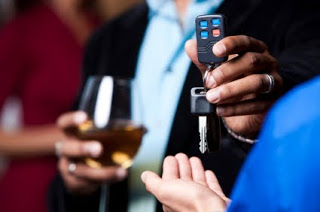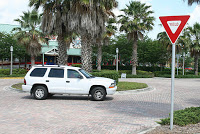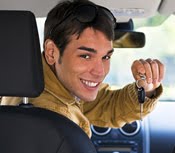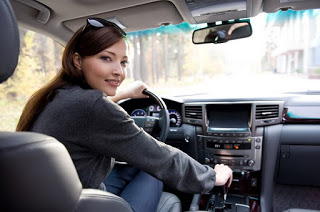
Social Host Liability Laws
December 29, 2011
As the New Year approaches and parties are being planned, hosts should be aware of their liabilities and responsibilities when it comes to serving alcohol.
Every state has some form of a little known law known as Social Host Liability Laws. Most of these laws are sub-chapters of “Dram Shop” laws. Dram shop laws are those laws that set out the responsibilities and liabilities for businesses such as bars and restaurants that regularly serve alcohol. Social Host laws however refer to the responsibilities and liabilities for a home owner or party host.
In most states the Social Host laws refer primarily to a homeowner who knowingly serves alcohol to a minor. While most responsible adults would never consider serving alcohol to a minor, a surprising number of adults either actively serve alcohol at parties attended by minors or turn a blind eye when their teens are hosting a party where alcohol is served. A recent article in the Brockton, MA Enterprise cited a survey conducted by Hingham High School where students were asked if they had attended parties where parents allowed teens to drink. More than 25 percent of freshmen and juniors at the school answered that they had attended such parties – an increase of 30 percent since 2008. A similar study at seven schools in Concord MA revealed that 27 percent of the students had attended parties where parents allowed teens to drink.
Social Host laws also hold parents criminally responsible even if they were unaware that the teens had sneaked the alcohol in. A Stanford professor who recently hosted a party for his son and friends specifically stated that no alcohol was allowed. Apparently, without the professor’s knowledge, some of the teens brought alcohol to the party and police showed up around 11:00 pm to investigate. The professor was charged with 44 counts of contributing to the delinquency of a minor – one for each teen at the party.
While there are separate laws concerning supplying alcohol to a minor, Social Host laws go further and hold the host both criminally and civilly liable if one of their guests causes injury to a third party. Some Social Host laws also prohibit serving alcohol to someone – teen or adult – who has a known drinking problem. Other states hold the host liable if they provide keys to an intoxicated adult who went on to injure a third party in a collision.
Parents who have the idea that they would rather have their kids drinking “safely” at home rather than out on the street need to remember their responsibility to be “Be A Parent, Not A Pal.” For hosts of adults, they should also be aware of their responsibilities and remember that old adage: “Friends Don”t Let Friends Drive Drunk.”To prevent one of your guests from leaving a party while intoxicated, a host has several options:
- Take the car keys from your guests as they enter and plan on them spending the night.
- Call a cab for your guests.
- Be aware of services provided by cab and towing companies or public transportation agencies that provide free or low cost rides on New Year’s Eve.
- Be a really good host, remain sober and be the designated driver for your guests.
For more information on Social Host laws in your state, visit: http://www.socialhostliability.org/
Have a safe and a happy New Year.

10 Most Confusing Traffic Signs
December 27, 2011
We all know that traffic signs do an important job: they tell us what exactly we can or can’t do on the road. But what if the signs were confusing? Sometimes this leads to funny stories afterwards, other times it leads to tragedy, as a misunderstood sign may sometimes lead to crashes.
These signs, wherever state they may show up, must be approved by the Manual on Uniform Traffic Control Devices (MUTCD). They create the standard by which all signs could be installed, maintained, and managed by road managers everywhere. The MUTCD is published by the Federal Highway Administration (FHWA).
Here then, is a list of some of the more … confusing traffic signs that are currently out there.
Yield – The red upside-down triangle sign, or sometimes, a simple verbal instruction to “YIELD”? It’s surprising just how many people get confused with this sign. The best way to describe it is it’s like a lighter version of the STOP sign. When faced with this sign, motorists should stop, give way to vehicles from another approach and then enter an intersection. These usually appear in smaller roads that don’t get enough traffic that they don’t necessarily need a STOP sign.
Runaway Vehicles Only – But what if you weren’t running away? This sign signifies that a runaway device is installed in an area. This is usually for trucks that have lost control — the device is usually a patch of road with sand or gravel, which helps vehicles come to a safe stop. The gravel or sand allows the momentum of the big vehicle to dissipate, allowing for safe stopping.
This Side of Sign – This sign signifies that something is allowed on “this side” or the side where the sign is installed. A variation of this sign may say “Parking This Side of Street.” This means that one may only park on that specific side and parking elsewhere may give you a parking ticket.
To Request Green Wait On [Bicycle symbol] – Blame it on confusing wording. This sign is supposed to give bikers a green light. This sign should be used in conjunction with traffic actuators that are adjusted to the amount of metal a bicycle has. If you’ll notice, there is a vertical line going on the top and bottom of the bicycle symbol. This means that bikers should position themselves in the designated marking for them to be detected by the actuators, giving them a green light. Some people confuse this as waiting for bicycles to ride by until they can get a green light.
Look <—-> – Looking left-to-right? Isn’t that what parents and preschool teachers teach kids before crossing the road? This sign is usually located near railways, signifying that motorists should be on the lookout for trains from both directions.
Truck Rollover – Nope this sign doesn’t signify the truck-wheelie lane — it only means that there is a slope nearby that truck drivers should be aware of, since there’s a big tendency for their vehicles to rollover.
Circular Intersection – Though it bears a striking resemblance to the recycling sign, this sign simply signifies that a circular intersection is coming up. Some circular intersections are different. In some cases, the entering vehicles have the right-of-way, while the vehicles inside the circle must yield. Sometimes this is reversed, so drivers have to do a bit of research before they go right through.
Stop Ahead – Stop vertically? No — this is simply a sign that signifies that there will be an oncoming stop. A sign for a sign, perhaps?
9% Grade – The roads aren’t trying to quantify your reading level or your abilities with math. This only means that there is an oncoming 9% Grade slope. Slopes on the road are measured in grades: consider that 9% is 9-feet off a hundred. It means that elevation may change from 5 (5% Grade) to 9 (9% Grade) feet.
DIP – Motorists have to wonder: how exactly are they going to “dip” their cars? This simple sign that says “DIP” means that there will be a dip in the road: parts of the road may go down, and then elevate right back up again.
Having trouble with learning the Roads of the Road and Traffic Signs? Take a DMV Practice Test to become an expert and pass your DMV written exam the first time.

Tips for Safely Changing Lanes During your Road Test
December 14, 2011
While taking your road test, the examiner may ask you to change lanes. Changing lanes is not a simple operation and the examiner will be looking to see if you follow all of the proper procedures to ensure that you change lanes safely.
Here are some tips on how to safely change lanes:
Assess the situation on the road ahead. Are there other vehicles trying to merge into your lane? Are there pedestrians ahead who are about to cross? Should you even change lanes? A big thing to look out for are vehicles in the lane you are about to change into flashing their brake lights or slowing down, it might indicate that there’s trouble in that lane and that changing lanes wouldn’t be worth it.
Use the rearview mirror to check motorists behind the vehicle. Check all of your mirrors before changing lanes. Is anyone behind you or in the far lane preparing to move into the lane you want to enter? Are there vehicles speeding up to get in on the lane you’re trying to change into?
Make a habit of always signaling other drivers about what you’re about to do on the road. Letting other motorists know your intentions will keep both you and them safe. This is especially true for changing lanes – drivers behind you have to make their driving decisions based on what you do. Make a habit of always giving signals for everybody’s benefit.
Check your blind spot before moving in. Before changing lanes, quickly turn your head with your chin over your shoulder to check your blind spots. It’s amazing how quickly a vehicle can move up and totally disappear in your blind spot.
When it comes to intersections, only change lanes before or after passing them. Remember, it is illegal to change lanes within 100 feet before or after an intersection.
For more practice consider taking a simulated behind-the-wheel online prep course offered through OfficialDMV.com.
Beyond the Breathalyzer; Testing Drivers For Drugs
November 21, 2011
Concateno, a company made up of several drug and alcohol testing labs and manufacturers throughout Europe have announced the development of a simple hand held road-side testing device that police can use to test drivers for the presence of drugs.
While drugged driving doesn’t get as much press as driving under the influence of alcohol, it is a serious problem and apparently, drug use among drivers is just as prevalent as alcohol use. According to the Concateno press release, an Australian study showed that 35% of drivers hospitalized after a crash showed the presence for illicit drugs compared to 29% testing positive for alcohol.
The National Highway Traffic Safety Administration (NHTSA), latest study on drugged driving showed that among the total number of drivers who were killed in car crashes in 2009, 18% tested positive for drugs. Those figures don’t represent the depth of the problem because not every state tests for the presence of drugs. Among the fatally injured drivers who were tested, 33% showed the presence of drugs in their system at the time of the crash.
A 2007 study by NHTSA showed that at least 16% or one out of every six weekend nighttime drivers tested positive for the presence of drugs. The 2008 Monitoring The Future Study, an ongoing annual assessment of drug and alcohol use by high school students showed that, among the respondents, one in ten high school seniors reported driving after smoking marijuana within the two weeks before the interview.
The new hand-held device tests a single oral fluid sample and can, within five minutes, test for the presence of cocaine, cannabis, opiates, amphetamines and methamphetamines. A previously developed device made by the same company has been used by police forces in Italy, Spain, Australia and Croatia. The new device has not been approved yet for use in the United Kingdom but there is strong public pressure to add it to law enforcement’s arsenal of weapons against drunk and drugged driving.
In Australia, where the device has been used for some time, officials report that, over the past five years, the number of drivers charged with driving under the influence of drugs has dropped by half.
This is a device that American law enforcement agencies may want to consider adding to their equipment list to more effectively remove drugged drivers from America’s roads.

Effectiveness Of In-Vehicle Monitoring Systems For Teen Drivers
November 9, 2011
The Insurance Institute for Highway Safety (IIHS) conducted an interesting experiment in 2009 that tested the effectiveness of various in-vehicle monitoring systems on teen drivers. The study monitored the driving habits of 84 teen drivers with different types of in-vehicle technology to determine which ones had the greatest effect on both the teen drivers and their parents.
IIHS installed their own monitoring equipment in the study vehicles that recorded when drivers braked sharply or accelerated suddenly, didn’t use belts, and exceeded speed limits. The monitors used GPS and a satellite modem to transmit the data to a central processing facility and the data was made available for parents to review. In addition to its own monitoring systems, IIHS also installed different types of in-vehicle monitoring that are commercially available to parents of teen drivers. The 84 subjects were randomly assigned into four groups:
“Drivers in groups 1 and 2 heard audible alerts for risky maneuvers. A short, low-pitched buzz sounded for sudden braking and acceleration. A continuous low-pitched buzz sounded when the belt wasn’t buckled and stopped only when it was fastened. Speeding triggered a single beep at 2.5 mph over the posted limit, followed by continuous beeps at increasing pitch and frequency when the teenage drivers exceeded the limit by more than 10 mph.” For drivers in group 1, the information was immediately recorded and transmitted to the parents for review. The drivers in group 2 had the opportunity to correct their behavior and, if corrected within 20 seconds, prevent a report from being sent to their parents.
There were no in-vehicle alerts for drivers in group 3, just website notification. Group 4, the control group, was monitored but had no alerts or web notification.
The different types of monitoring systems included:
- Basic systems: CarChip Pro – http://www.carchip.com/Products/8226.asp, CarChipPro is essentially a black box that plugs into the car’s diagnostic recorder. The system can record speed, mileage, and other data. Once the information is downloaded, it provides parents with a history of the teen’s driving. The system may also be set to turn into an alarm if certain speeds are reached or if the driver is braking too hard. The system is a tool to help discuss a teen’s driving habits by allowing parents to show them the facts, and how to correct their driving behavior.
- GPS-based systems: Inthinc’s Tiwi – http://www.inthinc.com/products/tiwifamily This system monitors drivers in real-time by providing in-vehicle, verbal feedback to the driver when they are speeding, not wearing their seat belt or driving aggressively. Also, parents can be notified immediately of unsafe driving behavior (through text, voicemail or email) and all info is reported through an Internet-based portal for later review and discussion between parent and teen. This system gives teens a chance to correct their behavior before their parents are notified.
- Video systems: DriveCam: Teen Safe Driver Program package – http://www.drivecam.com/, This in-car camera system records “risky driving behavior” and sends them to DriveCam for third-party assessment of a teen driver’s skills. The reports are then sent to parents, who can discuss the driving behavior with their teen.
- Smart keys: MyKey – http://media.ford.com/article_display.cfm?article_id=29172, First seen on the 2010 Ford Focus, the MyKey system is designed to help parents set certain limitations on their Ford vehicles for when their teens are driving. With the configurable key, this system is designed for parents who share their cars with teen drivers. Ford has announced that this technology will be available in all Ford vehicles beginning in 2012. The key features are:
- Do Not Disturb, prevents use of cell phone and texting while the car is in motion.
- Speed Control, limiting the top speed of the Ford vehicle to 80 mph.
- Volume control, which allows parents to set a maximum volume level for the car’s radio.
- Beltminder, an alarm system that mutes the radio and plays a chime every 6 seconds, every minute or every 5 minutes when the seatbelt is unbuckled.
- Fuel reminder: alerts the teen that they need to refuel, when fuel is low.
The results of the study were as follows:
- Seat belts – Seat belt use was already at a 94% level when the study began but increased among all four groups when the drivers were faced with a continuous buzzing or chiming noise. This has been found to be effective among all age groups.
- Stops and starts – Sudden braking and rapid starts can indicate aggressive driving or inattention to the driving environment. Sudden stops and starts fell in all groups relative to the control group but was especially significant group 1 with immediate web notification to their parents. The effects were even greater among those whose parents received periodic report cards.
- Speeding – Speeding was the most prevalent risky behavior noted among all groups. Speeding up to ten mph over the posted speed limit fell among the groups with alerts in their vehicles but then started to rise over time. Speeding was only significantly reduced among the groups whose parents were notified or those who had a chance to correct the problem before parental notification.
- All risky behaviors – Risky behaviors declined most among the two groups with parental notification but were most noticeable among group 2, the ones who had a chance to correct their behavior before parental notification. Risky behavior was somewhat higher in group 1, apparently because it was too late to correct the behavior and their parents were going to be notified anyway.
Parents will want to consider the results of this study when choosing an in-vehicle monitoring device for their teen driver.
